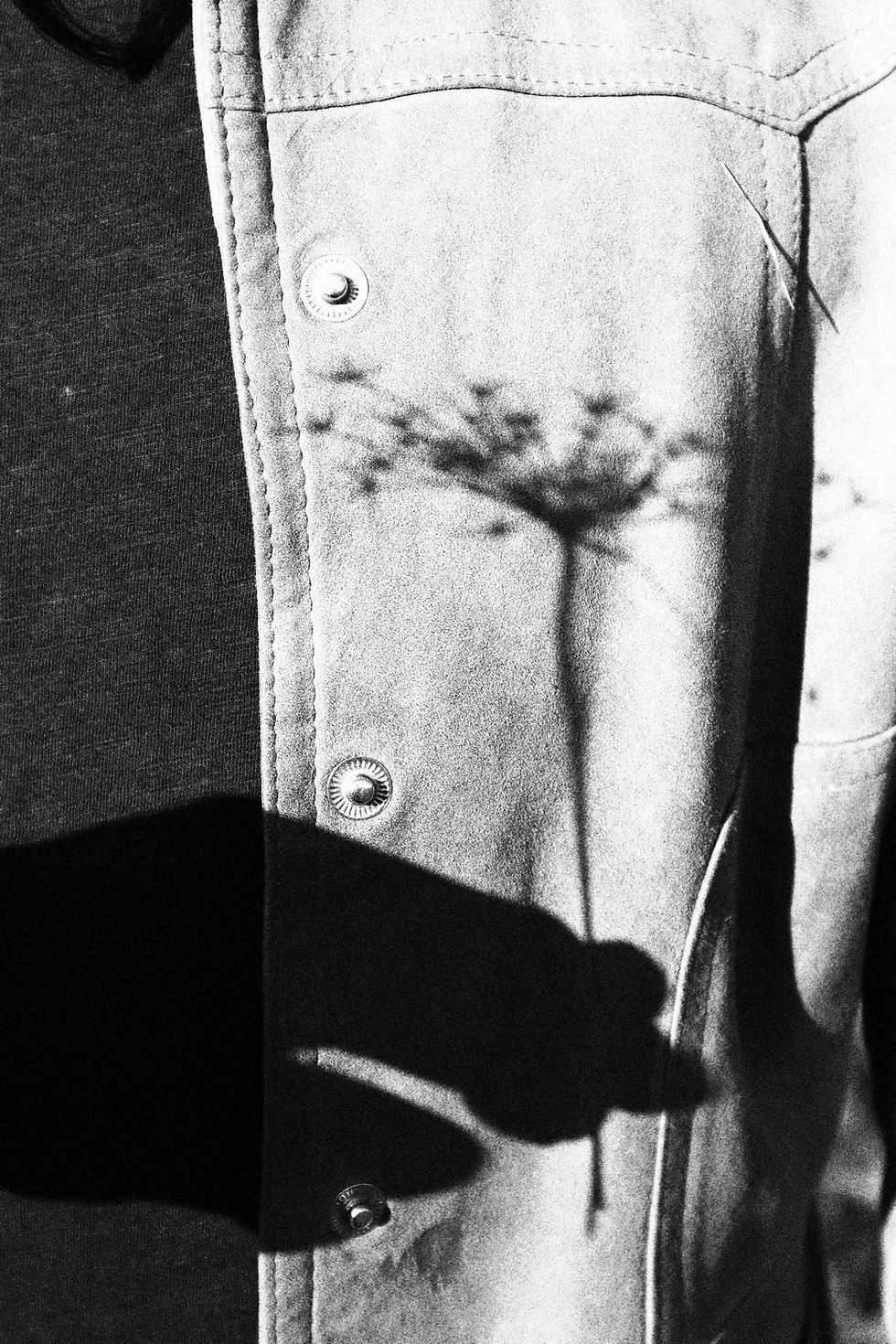Recipe for Therapy
- Daphnée

- Jun 27
- 5 min read
by Daphnée

Serves: one life worth living.
Prep time: approximately 2 years.
Equipment needed:
1 virtual safe space.
1 black tape recorder.
1 well-loved Dialectical Behaviour Therapy (DBT) manual to treat Borderline Personality Disorder (BPD).
Ingredients
A depressed 22-year-old client who’s barely holding it together.
A cozy hoodie with the following slogan: “Maybe she’s born with it, maybe it’s DBT.”
A therapist with a signature laugh, B – and a pug who snores loudly.
2 tablespoons of trust.
6 cups of validation.
3 teaspoons of honesty.
4 spoonsful of mindfulness.
1 pinch of warmth.
3 cups of dark humour.
3 scoops of uncontrollable laughter.
1 chunk of metaphors.
1 cup of sacred silence.
2 handfuls of well-timed pauses.
A pinch of radical acceptance.
A splash of frustration.
A sprinkle of dialectics.
A tightly sealed jar full of grief.
A drizzle of gratitude.
A whole can of caring whipped cream.
Instructions:
1. Preheat the safe space.
Every week, log into Zoom. Adjust the angle of your camera, make sure your microphone is on, and press START to begin recording. Say, “Hi, B!” then immediately ask to see her snuggly pug, who snores loudly through the screen. Follow up with pleasantries and highlight the fact you’re wearing yet another mental health-themed hoodie.
B calls you “sweet pea” and “dearest” and “honey.” She says she would do a whole lot out of caring, and then she listens intently while you share the most vulnerable parts of your story.
She asks about your therapy goals and says you’re both on the same team. You say you want to spend less time in bed with the curtains shut, learn how to reduce the anxiety that makes you pick at your nails until they bleed, and get rid of the intrusive thoughts that convince you of an eventual shooting on the bus.
She says there are skills for that, reassures you that she has faith in your abilities to learn them - but you’re not sure you’re ready for change. You are drowning in three feet of water deep inside a well, and you’re too tired to climb out. You don’t even want to try.
B has already promised not to give up on you, and when you tell her about the years of untreated depression, about the nightmares that leave you awake drenched in cold sweat, and about your relentless drive to succeed at school despite it costing you every bit of happiness – she shakes her head and says, “That’s not the life for you.”

2. Mix the raw ingredients.
Slowly combine 2 tablespoons of trust, 6 cups of validation, and 3 teaspoons of honesty into a bowl. Stir gently and often, until you reach a smooth consistency. Then add 4 spoonsful of mindfulness, a pinch of warmth, and three cups of dark humour.
B says she doesn’t want you to die by suicide. She says it would make her physically ill, that she would be devastated, even a little disappointed.
“It would not be cool of you to kill yourself,” she says, “it would be super uncool for other people, not just for you.”
She says that you’re a devoted friend, that you have the potential for a good life, and that you can’t leave the world just yet.
“There is too much left that you have to do,” she says, “and you have too much to offer to other people.”
She wants you to give up self-harm, but you argue that cutting is the only way you know how to stop hurting. You keep a First Aid kit at home just in case, wrap your arms in white bandages when it gets too much, and hesitate to wear short sleeves in the summer months.
3. Pour in silence, then let rise.
Whisk in 3 (generous) scoops of uncontrollable laughter, then crumble in a good chunk of metaphors. Next, incorporate 1 cup of silence and 2 handfuls of well-timed pauses. Toss in a good amount of vulnerability. Let rise, then spread the mixture evenly on a baking tray.
B says you struggle with coping with big, intense emotions. She says emotions love themselves, and that emotions aren’t emergencies, and there is no need to escape them. She says that being emotionally sensitive is not a bad thing, that feeling deeply also means you get to have a rich life full of meaning.
B reminds you that you need to get out of your head and into your body. She says, “I know that’s the last place you want to be.” B remains present, grounded, and makes you feel like maybe you’ll be okay, someday. She says that pain is inevitable, but that suffering is optional – or something along those lines.
She says that thoughts are just thoughts – all of them real, not all of them true. She says that you don’t have to believe them. When you ask her if mental illness is a choice, she says, “God, no. Is breathing a choice?”
4. Bake until the kitchen smells like Christmas.
Remove the tray from the oven and let the dish cool with compassion. Then add a pinch of radical acceptance, and a sprinkle of dialectics. You may accidentally season with a splash of frustration – but don’t worry, that’s just part of the recipe.
B reminds you to embrace the messiness of life – and the messiness of being a human. She says that she admires your courage to face the scary parts of yourself, even the aspects that you dislike. B says to just notice what’s going on, to accept reality as it is, and to take care of yourself the same way you’d take care of a friend.
5. Serve with love, and gratitude.
Go find that jar of grief, stored in a cool, dark place, and bring it to light. Pour the content on top of the dish, using the grief as garnish. Then, drizzle as much gratitude as you wish. Finally, crack open the can of caring whipped cream. Dispense furiously, without any hesitation.
You still hear B’s voice inside your head, even though it’s been more than two years since you last saw each other. Even though you’re now across the ocean, her words still resonate in your ears, still help you get outside your head and into the present moment.
Chef’s note: At first, you will not like this dish, and you will want to quit. Please don’t, because the result will be worth it. Although there won’t be a grand reveal, somewhere between sessions 3 and 30, you’ll realize that you’ve been blessed with the most joyful, imperfect recipe.
You spend a year traveling across Europe. You eat pasta near the Grand Canal in Venice, stroll along the French Riviera, and enjoy the sunshine on a beach in Barcelona. You dance the night away in Madrid and Prague, relax in the thermal baths in Budapest, and jump into the Adriatic Sea from a speedboat in Croatia. You sing at a karaoke bar and visit Freud’s old office in Vienna, eat buttery croissants in Paris, and explore famous landmarks in London. Your life has become such a grand adventure – and you’re committed to savouring every moment.

***

Daphnée holds a BA in English literature and counselling psychology. Her work has been previously published or is upcoming in The Spadina Literary Review, Ricepaper Magazine, The Humber Literary Review, and Ginosko Literary Journal, among others. When she isn't writing, you can find her traveling across Europe, petting Golden Retrievers, and eating all shapes of pasta.






Comments